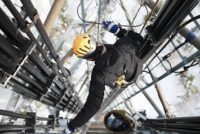Partnership Goals and Outcomes: Lessons from the Powerline Partnership
What tools are you using to reduce work-related injuries and fatalities in your workplace? Do you collect and review your injury and illness data? Review safety bulletins from your industry trade group? Investigate near misses and incorporate lessons learned into your training? But have you ever considered … working cooperatively with your industry competitors? Or […]










